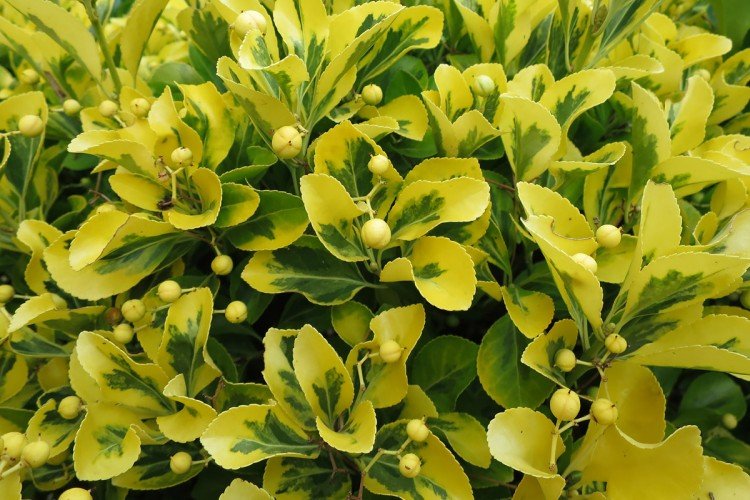Euonymus plants come in a wide variety of shapes, from tiny creeping variants to enormous giants. In order to properly care for Euonymus, you must provide well-draining soil, do routine trimming to maintain a tidy appearance, and maintain the right temperature. Euonymus is a versatile and well-liked selection among gardeners because it may flourish during the winter whether indoors or in a covered greenhouse.
Table of Contents
General Information about Euonymus
With its multicolored openwork crown and whimsical earrings, the charming spindle tree is an instant eye-catcher wherever it grows. In recent years, gardeners have undeservedly forgotten about such beauty, and in vain!
Among hundreds of species, there are evergreen and deciduous. There exist both diminutive, creeping varieties and towering giants. Most of them are thermophilic, but some are still able to withstand severe frosts.
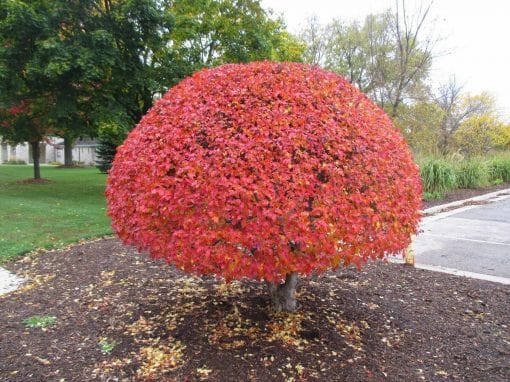
The tallest and most spreading Euonymus trees stretch up to 10 m. Most often there are bushes up to 3-5 cm in diameter and species up to 1.5-2 m are considered miniature. Creeping varieties are classified separately. By the way, they are good for green hedges and arches.
Euonymus is a flowering plant that blooms towards the end of spring. Its buds are not too remarkable, in contrast to the multi-colored leaves, which by autumn collect all shades from yellow to purple. In addition, long earrings look unusual, which also gradually change shade. Keep in mind that Euonymus is a poisonous plant.
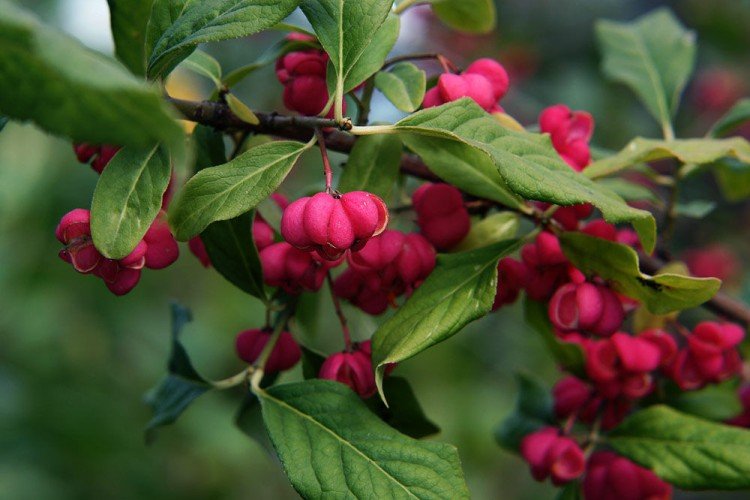
Varieties of Euonymus
Within our latitudes, the prevalent species are limited to two – the European Euonymus and warty Euonymus variations. But we will tell you about a few more popular ones!
European Euonymus
There are two main subspecies of such an Euonymus – shrub and tree. The tree, depending on the conditions of the region, can grow up to 8 m. Frost resistance is average.
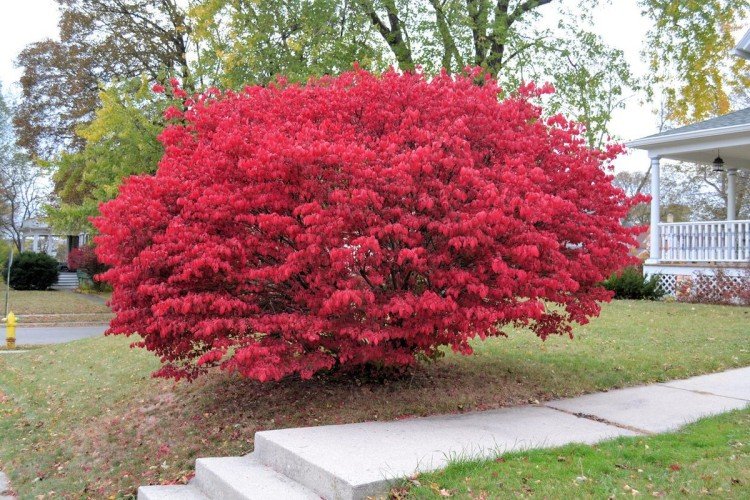
Warty Euonymus
A medium-sized Euonymus shrub up to 1.5 m is notable for its very slow growth and high frost resistance. With its not very romantic name, it is surprisingly decorative. Shoots are overgrown with characteristic thickenings.
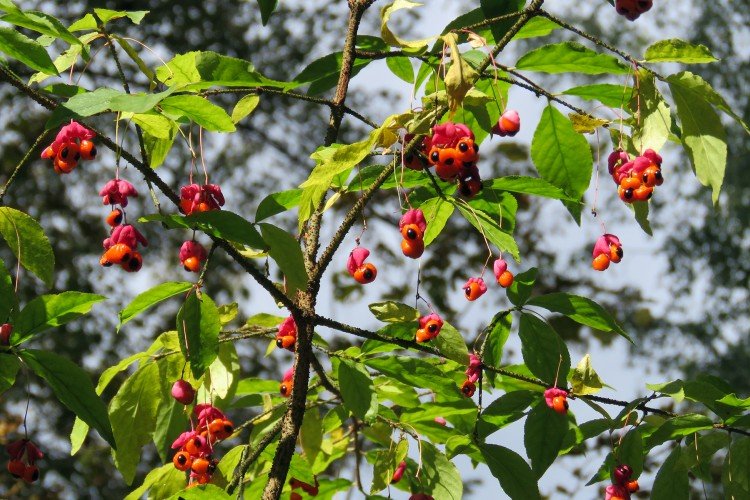
Broad-leaved Euonymus
This is a tall shrub up to 5 m with abundant flowering and a sharp aroma. But this Euonymus is more often grown for medical purposes. Therefore, among gardeners and landscape designers, he is not so in demand.
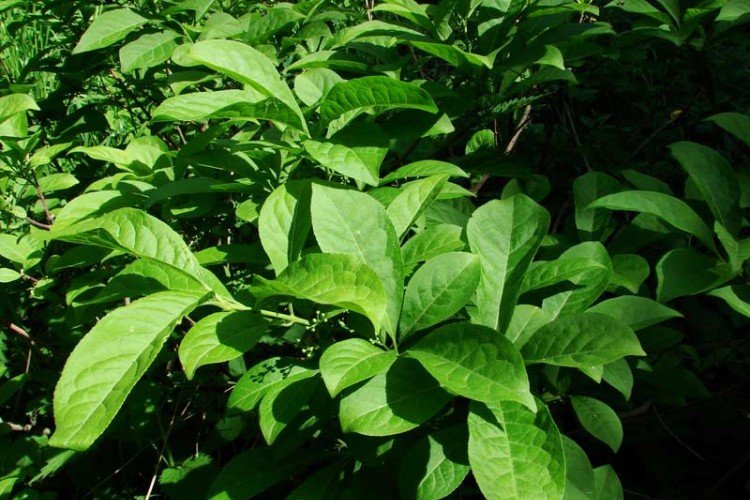
Beresklet Fortune
And again frost-resistant, and also has a very decorative look. This is a very compact Chinese spindle tree in the form of a variegated creeping shrub up to 50 cm.

Large-winged Euonymus
A tall tree-like shrub grows well in the shade. But still, in sunny areas, it is much more beautiful and is grown mainly in the form of single plantings.
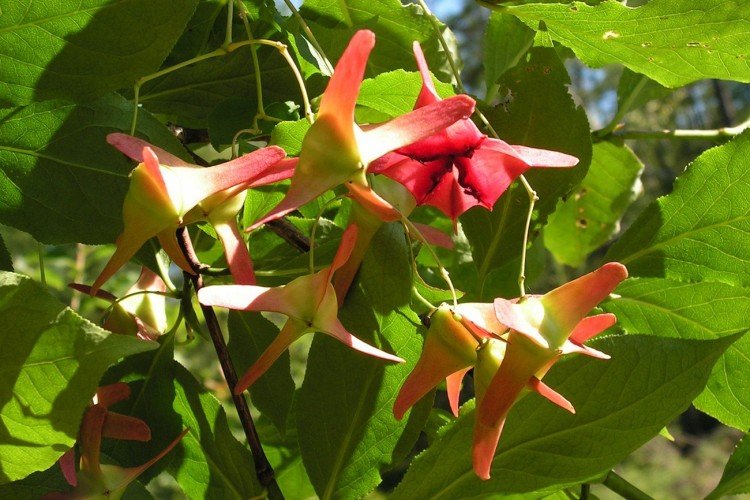
Japanese Euonymus
A heat-loving species that does not tolerate temperatures below +5 degrees. Fortunately, there is positive news: it thrives exceptionally well during winter when kept indoors or protected within a greenhouse. Therefore, it is mainly grown in tubs.
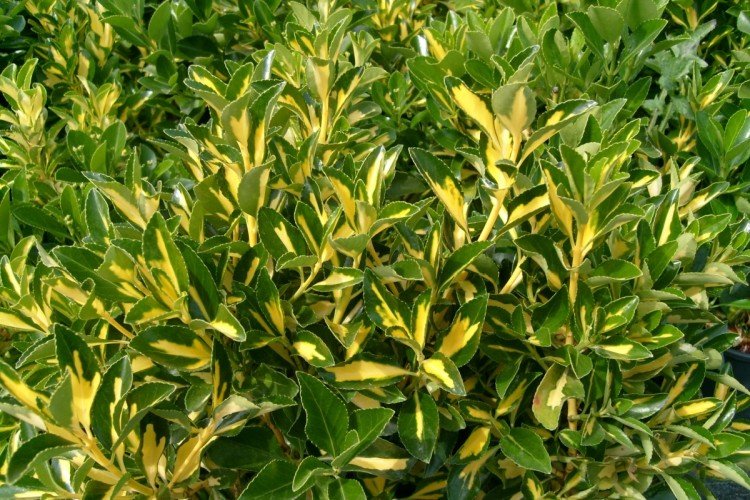
Dwarf Euonymus
It is easy to distinguish by atypical narrow lanceolate leaves with curved tips. It grows up to 1 m in height, but quickly expands in breadth, and captures entire areas.
Euonymus Care Tips
The Euonymus has rather banal and restrained requirements. A little moderation in everything – and it will grow well and delight with its beauty!
Temperature
The optimal summer temperature for Euonymus is approximately 20 degrees Celsius. For indoor flowerpots in winter, it must be lowered to 6-12 degrees so that the plant gains strength by spring.
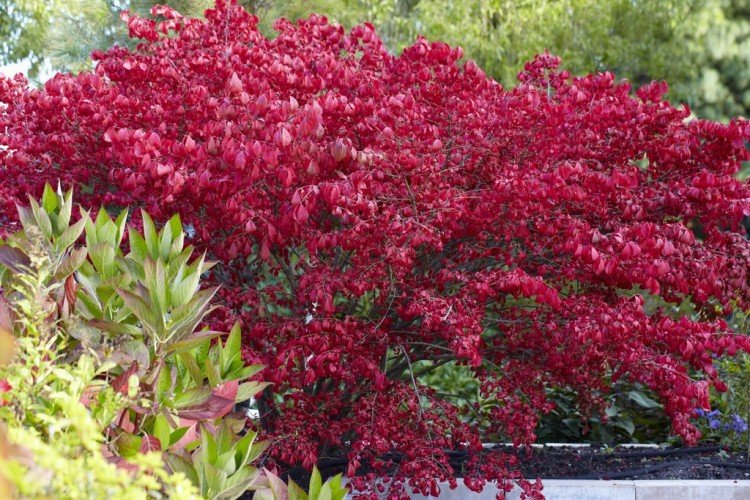
Lighting
The light should be bright but diffused because aggressive direct rays can burn and affect the color of the leaves. Light requirements may vary by variety.
Watering
In summer, you will definitely need abundant watering and regular spraying, because dry soil and dry air are the first causes of leaf loss. But in winter, the Euonymus generally almost does not need additional moisture.
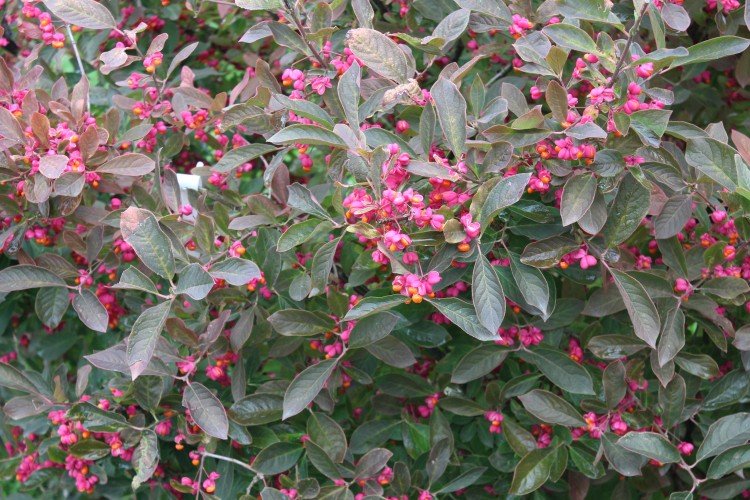
Soil
Any type of soil can be used, but it should always be light and loose. It is beneficial to incorporate leafy soil along with turf and organic matter, while also adding peat and sand for optimal results.

Fertilizers and Top Dressing
Euonymus is sensitive to feeding. Moreover, in this case, you can safely alternate mineral complexes and organics with an interval of 1-2 weeks.
Pruning
For aesthetic purposes, the shrub is trimmed to achieve a tidy and well-maintained appearance of its crown. In addition, for branching in the spring, fresh shoots must be pinched.
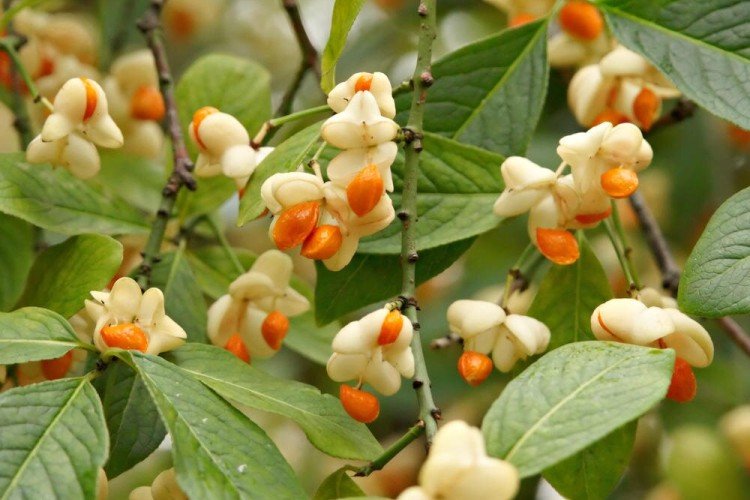
Winter Care
This applies to outdoor plants that will remain right in the garden. Winter-hardy species do not require additional care and perfectly tolerate even -25 degrees under snow. If the branches are partially frozen, they will recover in a season.
Transplantation
And this item applies to indoor and tub plants. Decorative Euonymus gradually depletes the soil, so even adult slow-growing bushes are recommended to be replanted every 2-3 years.
Reproduction and Planting of Euonymus
Colored and variegated varieties are propagated only vegetatively in order to preserve their peculiarity. Garden plants are easiest to propagate by layering. Just bend the low shoots to the ground into a groove, staple them in, dig in, leaving only the top, and wait. After the roots appear, they can be separated and transplanted.
Cuttings are a universal method for both tub and outdoor plants. At the beginning of summer, cut the apical cuttings about 7 cm with an internode, treat with a stimulant, and root in peat with sand under the film. They can be transplanted after 2 months.
During the early part of the season, it is possible to separate root cuttings from the main plant, which typically has roots measuring around 30 cm in length. They are simply immediately transplanted to a permanent place. And dwarf species with abundant root growth are completely painlessly propagated by dividing the rhizome.
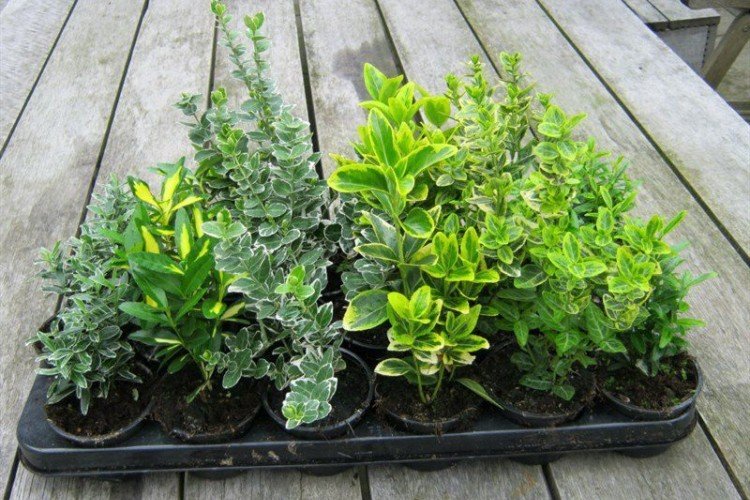
Pest and Disease Control
Spider mites, mealybugs, and codling moths are especially dangerous. Less commonly, red mites, scale insects and moths settle on a tree. All of their spoil and destroy the leaves, but complex insecticides help well from all.
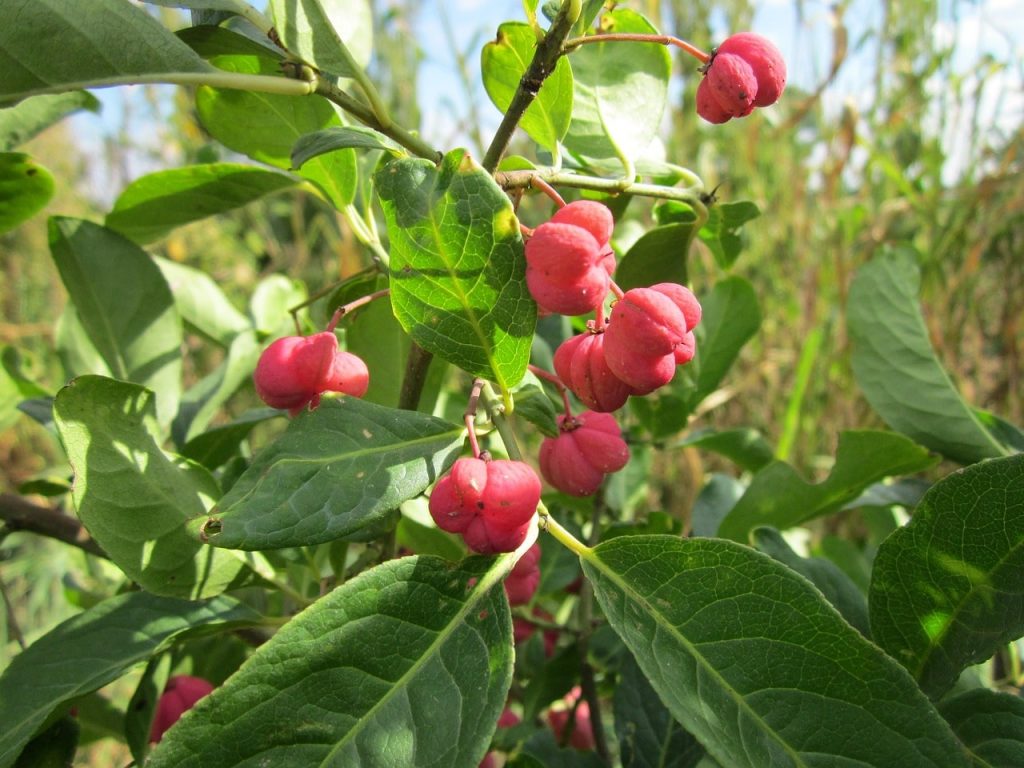
Drying of branches and necrosis of the bark most often occurs due to a fungal infection. The second most common fungus is Ascochitosis, as a result of which the leaves become covered with brown spots, which gradually brighten. It is necessary to get rid of the affected parts of the plant, and then treat everything with Bordeaux mixture.
Conclusion
Euonymus loves proper self-care and does not tolerate greenhouse conditions, because it is believed that this plant has a real masculine character. According to popular belief, by planting this incredibly beautiful shrub in your house or garden, you can attract good luck, success, and love to your home.


